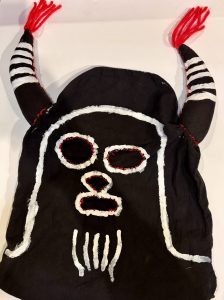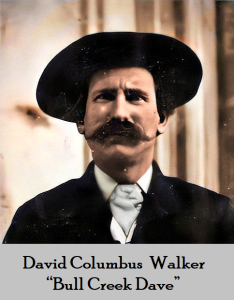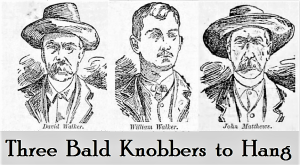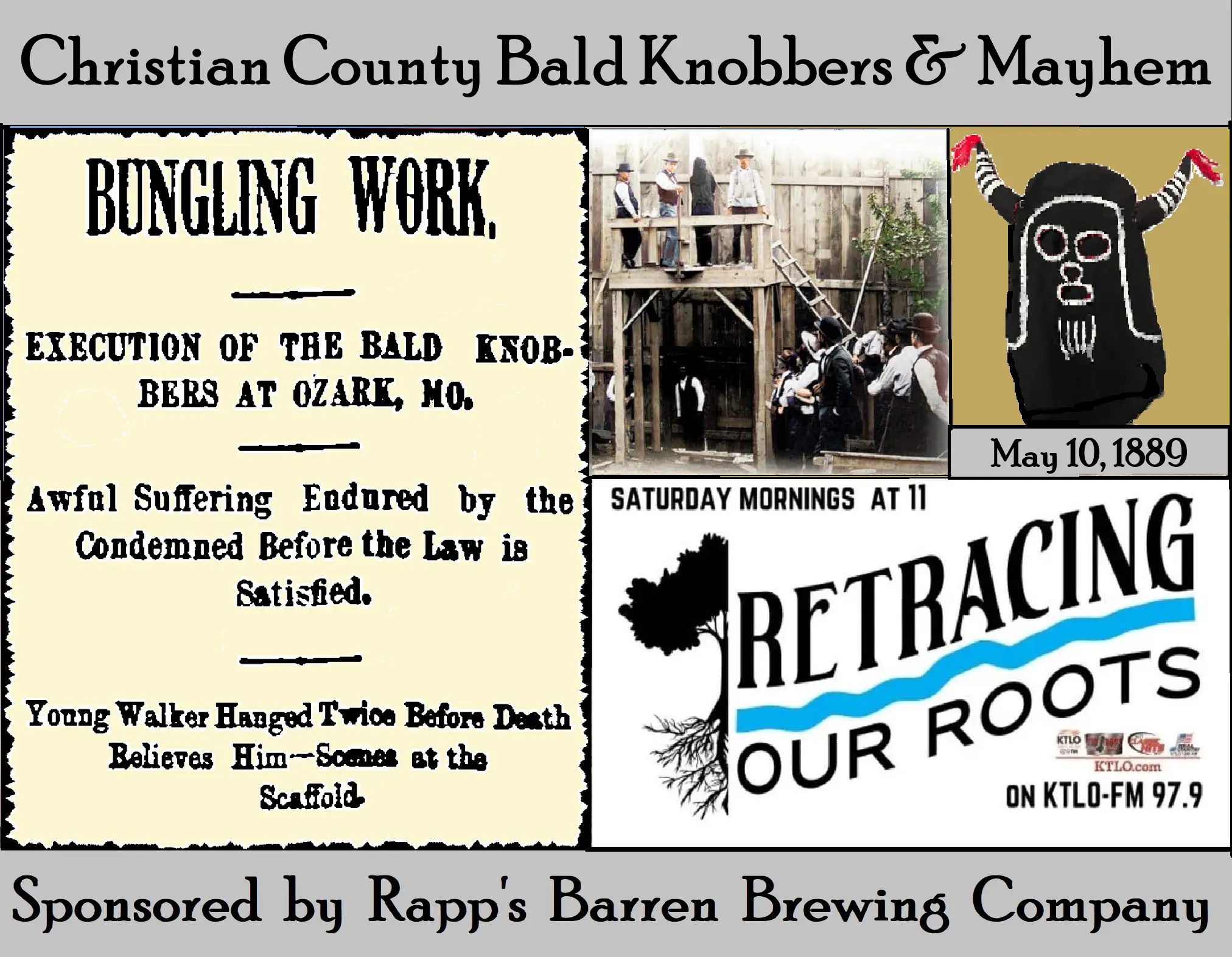ROR: Christian County Bald Knobbers and Mayhem
Welcome to 𝙍𝙚𝙩𝙧𝙖𝙘𝙞𝙣𝙜 𝙊𝙪𝙧 𝙍𝙤𝙤𝙩𝙨 with Sammy Raycraft and Vincent Anderson, as we trace the rise and fall of one of the Ozarks’ most notorious vigilante groups, spiraling from mayhem to murder, and ultimately, to execution.
As we began the show, Sammy had an opportunity to see a replica of a Christian County Bald Knobber Hood. This style of hood can be seen painted in the Christian County Courthouse in Forsyth, Missouri, and the Silver Dollar City ride, 𝙁𝙞𝙧𝙚 𝙞𝙣 𝙩𝙝𝙚 𝙃𝙤𝙡𝙚. The hood is also use in the outdoor drama, 𝙎𝙝𝙚𝙥𝙝𝙚𝙧𝙙 𝙤𝙛 𝙩𝙝𝙚 𝙃𝙞𝙡𝙡𝙨 at Branson, Missouri

𝐓𝐡𝐞 𝐁𝐚𝐥𝐥𝐚𝐝 𝐨𝐟 𝐭𝐡𝐞 𝐁𝐚𝐥𝐝 𝐊𝐧𝐨𝐛𝐛𝐞𝐫𝐬
Last week had comments and question about the Ballad of the Bald Knobbers; so here’s a little extra to fill in the gaps. The Ballad of the Bald Knobbers is a crucial chronicle of the events in the 1880s and 1890s in the Ozarks. This ballad offers a valuable perspective on the Anti-Bald Knobber history that shouldn't be lost.
According to Vance Randolph’s book, "Ozark Folksongs," Mary Elizabeth Mahnkey, daughter of an original Bald Knobber, and A. S. Prather, confirms the song's originality. Mrs. Mahnkey says she recalls the lyrics set to the melody of "My Name is Charles Guiteau." To find the tune, I sought out "My Name is Charles Guiteau," as it would also be the tune for the Ballad of the Bald Knobbers.
The history behind "My Name is Charles Guiteau" is fascinating. James A. Garfield was elected President in 1880. On July 2, 1881, Charles Guiteau shot Garfield, believing he had been promised a job in the administration. After two and a half months of suffering, Garfield died on September 19, 1881. Guiteau was sentenced to hang on June 30, 1882. Before his execution, he recited a bizarre poem, "I Am Going to the Lordy," convincing many he was insane. This event inspired a ballad, also known as a traditional Appalachian song. These songs are often labeled as a “Confession Ballad” or a “Murder Ballad.”
The ballad about Charles Guiteau was modeled after an earlier ballad of an execution of Jack A. Rogers who was executed November the 12th, 1858, in New York. “The Ballad of Jack Rogers” follows the classic Irish "come-all-ye" tradition of songs. This ballad offers a window into the brutal world of Irish immigrant youths, which is a generation shaped by the trauma of the Great Hunger, who often resorted to violence on the tough streets of New York.
This same tune also conforms to other confession & murder ballads throughout history, such as:
Fower Maries (Four Marys) - 1546
Lisnagade - July 13, 1789
Come All You Warriors / Father Murphy - 1798
Fair of Turloughmore - Aug. 1, 1843
My Name is Joe Bowers - 1849
The Lamentation of or Execution of James A. Rogers - Nov. 12, 1858
My Name it is John T. Williams - 1870's
Execution of Gustave Ohr - June 25, 1880
The Ashland Tragedy - Dec. 23, 1881
Execution of Charles Guiteau - June 30, 1882
Ewing Brooks - Aug. 10, 1888
Ballad of the Bald Knobbers - Late 1880's
Gruber Meadow – May 1925
So, the tune and style of the Ballad of the Bald Knobbers is rooted in a rich heritage of historical elements that predates the Saga of the Bald Knobbers..
𝐂𝐡𝐫𝐢𝐬𝐭𝐢𝐚𝐧 𝐂𝐨𝐮𝐧𝐭𝐲 𝐁𝐚𝐥𝐝 𝐊𝐧𝐨𝐛𝐛𝐞𝐫𝐬
First, we would like to thank past authors Lucille Morris Upton and Elmo Ingenthron for their research and writing. Lucille Morris wrote a book on the Bald Knobbers and Ingenthron wrote a set of excellent Ozark History books including Land of Taney and Bald Knobbers.
In 1885, a few other organizations sprang up in neighboring Douglas, Christian and Greene counties that also went under the name of Bald Knobbers. Another league of Bald Knobbers was led by Newton C. Tannehill in the western district of Ozark County, Missouri. The most notorious group amongst these four groups were the Christian County Bald Knobbers.

By the summer of 1886, vigilantism had spread to other Missouri counties. Kinney helped establish the Bald Knobber group in neighboring Christian County in 1885, under the leadership of Dave Walker, known as "Bull Creek Dave." After a year of laying low, Bull Creek Dave and about three hundred of his men embarked on a rampage. They surrounded a saloon in Chadwick, Missouri, destroying all the furniture and furnishings, pouring out the whiskey into the street, and sending a drunk man home with a noose around his neck.
They continued these kind of raids throughout the summer. Their punishment for those who opposed them, including backsliders and debauchers, often involved the liberal use of the cat o’ nine tails or hickory switches, but apparently, no one died.
Bull Creek Dave called for a mass meeting on March 11, 1887, to disband the Christian County Bald Knobbers. The was a slight problem in this maneuver as his seventeen-year-old son, William "Billy" Walker, strongly opposed this father’s decision. Billy wanted the group to whip a young man named William Edens, who was verbally opposing, or some say making fun of, the Bald Knobbers. On that very day, Edens had been heard saying that the Bald Knobbers were no better than sheep-killing dogs.
Billy easily recruited a group, including Deacon John Matthews, his nephew Wiley Matthews, the Baptist Preacher, C. O. Simmons, and several others. Bull Creek Dave Walker accompanied them down the road to the Edens’ cabin, pleaded for restraint, and stationed himself at a distance. But headstrong Billy and fellow Bald Knobbers would not heed Bull Creek’s plea.
The Knobbers were dressed in their usual manner, wearing their clothes wrong side out and their infamous black hood was adorned with white paint outlining facial features on their black hoods, and horns adorned with tassels.
The group found Edens spending the night at his father’s house, which was occupied by James Edens, his wife Elizabeth, William Edens, his wife Emma, their sister Melvina, her husband Charles Green, and their two children. The Knobbers surrounded the house of William Edens. Several Knobbers then battered down the door, rushed into the house, and started shooting.
The results were devastating. Charles Green and William Edens were killed, James Edens was seriously wounded, and Melvina Green was slightly wounded with the end of her finger shot off. One Knobber was straddling over her and Melvina pulled off his devilish, horned mask to reveal the young lieutenant, Billy Walker. Billy was discovered!
Before James Eden fell, he also managed to shoot Billy Walker in the groin/thigh region. Billy hollered, and his men pulled him out where “Bull Creek” Dave Walker was waiting a small distance away. With Billy injured, his father needed a place to spirit Billy away for recovery and protection. That location would be with the extended Walker family in Baxter County, Arkansas.
Unlike Kinney’s group in Taney County, this group of Bald Knobbers did not have significant influence over county law enforcement. Christian County, Sheriff Zack Johnson and his deputies arrested many Bald Knobbers, including Pastor C. O. Simmons, who had performed the funeral services for the murdered men prior. Simmons was wearing his blood splattered shirt he wore wrong side out during the murders!
It seems Pastor Simmons rode his jackass to the raid and happened to leave his beast behind. When the posse finally discovered Simmons’ jackass at the Eden’s farm, they slapped the animal on it back haunches, and it led them to Simmon’s home. The newspapers had a field day, stating Simmons was “Convicted by his ass.”
The only quandary remaining was retrieving Billy Walker from Baxter County, Arkansas.
Over time, Sheriff Johnson hatched a plan to bring Billy back to Forsyth, Missouri, to face trial. Johnson enlisted a young man whom Billy trusted to travel down to Mountain Home and speak with Billy. His job was to convince Billy that his girlfriend, Lois, was anxious to see him. The trap was set, and a rendezvous was arranged at the train depot in West Plains, Missouri. When Billy arrived, Lois was nowhere to be found, and the sheriff had his last suspect under arrest.
- O. Simmons ultimately pleaded guilty to second-degree murder and received a twelve-year sentence. The Walkers and both Matthews were found guilty of first-degree murder and sentenced to hang. The others were convicted of second-degree murder. All appeals by the Walkers and Matthews were rejected.
An elaborate escape plan was put together with the help of a friendly jailer and an unwitting deputy. On January 23, 1889, by 1:00 a.m., the Walkers and Matthews were outside their cells. They had to knock bricks out of the outside wall to escape, having previously removed most of the mortar. The noise woke the sheriff, who found both Walkers standing by their cells. It is unclear whether they were too slow or if Dave talked Billy out of another foolish stunt.
The Matthews made it through the hole and dashed to freedom. Unfortunately, Deacon John Matthews fell into a ditch and hurt himself. Five days later, he was found by a farmer and returned to prison. Wiley Matthews was never recaptured.

On May 10, 1889, the three men were led to the gallows, designed to hang all three at once. At 9:55 a.m., the trap sprang, but the circumstances were among the worst ever seen in a hanging. The shoes of all three were dragging in the dirt. Doctor Elkins had turned his face to avoid seeing the fall. When he turned, Billy was lying on the ground unconscious, and Dave was doubled over in agony. Billy’s noose had come completely loose, and Dave’s feet were flat on the ground, the noose almost off, as he struggled.
Matthews' feet were scraping the ground, but the fall had broken his neck, and he was pronounced dead at 10:10. Doctor Fullbright grabbed Dave by the hips and raised him up until a deputy mounted the steps to the gallows and shortened the rope. The doctor then dropped Dave, letting him strangle to death.
Meanwhile, Billy was regaining consciousness, and blood was spewing from his mouth into the black veil. The sheriff’s men carried him back up the platform, where he was hung a second time over the loud protests of the gathered crowd. At 10:29, with blood all over his white shirt, he was finally pronounced dead.
Thus ended the infamous Christian County, Bald Knobber Saga.
𝐓𝐡𝐚𝐧𝐤𝐬, 𝐑𝐚𝐩𝐩’𝐬!
A special thank you to Rapp’s Barren Brewing Company for their sponsorship of 𝙍𝙚𝙩𝙧𝙖𝙘𝙞𝙣𝙜 𝙊𝙪𝙧 𝙍𝙤𝙤𝙩𝙨. Their continued partnership helps us share the real stories of the Ozarks. These kinds of stories are not always found in textbooks, but we share them heart to heart. It’s thanks to local supporters like them that these voices from the past still echo through our hills.
We invite you to stop by Rapp’s in downtown Mountain Home and thank Russell Tucker and the whole crew. Rapp’s Barren Brewing Company is helping us pour heart into our local history.
Sip. Savor. Sojourn.
𝙍𝙚𝙩𝙧𝙖𝙘𝙞𝙣𝙜 𝙊𝙪𝙧 𝙍𝙤𝙤𝙩𝙨











